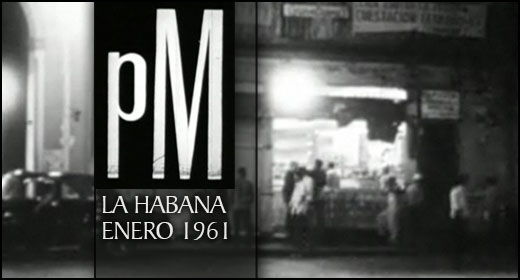Xavier Carbonell, SIGNIS Correspondent
The selection of seven films with the ability to synthesize a whole country is a challenging task, perhaps an impossible one. Even more when we talk about Cuba, an island that resists all simplification in seven elements, doesn’t matter if they are movies, books or musical pieces. Hence my intention to offer no more than a nostalgic journey through those films that built my affective education as a spectator. A collection of melancholies, distributed in seven parts, with no other aspiration but to enjoy them again in an imaginary cinema.
The strongest reason for my selection is that, in each one of them, the cinema took a another step in the interpretation of the Cuban essence; or represented a sort of menace to the given power, the History and the Politics; and also because it created stories about a group of subjects —identity, poverty, insular nature, fatalism, historical solitude— that became obsessive to the Cuban art.
My small sentimental canon of the Cuban cinema begins with PM (1961), a documentary by Sabá Cabrera and Orlando Jiménez Leal.
Seen from today’s point of view, it couldn’t be more harmless, discreet and indifferent to political hurricanes. A camera goes through the nocturne, exultant Havana in the beginnings of Fidel Castro’s revolution. The music, the people and the city are the protagonists of the thirteen minutes that unleashed an urgent and critical struggle for cultural power, freedom of creation and the role of the intellectual in the emergent revolutionary society.
PM represents a journey through streets and bars of the Havana’s night, as a simple memory of one of the friends and dancers that celebrate life in the other side of the lens. Where are, then, the heresy, the sabotage and the subversion that was attributed to the film by the orthodox bureaucrats of the moment?
Precisely there: within its innocence, in its aspiration of a regained paradise, unable to go beyond, where the lines of soldiers were expecting a USA invasion. How to be joyful, free and unconcerned when what is expected from the New Art, and even more, from the New Man, is to be committed, serious, grey custodian of the revolutionary ideology, absolute enemy of a cynical or ironic performance?
The price to be paid by PM was the famous “abduction” of the film, as told by our great writer Guillermo Cabrera Infante (brother of Sabá). It was precisely Cabrera Infante who wrote a literary counterpart of the documentary with his novel Three Trapped Tigers, a sort of translation to the letter of the nocturne spirit of the film.
Because of the PM affair, the Culture had to pay a second price, a more severe one: the Government finally set the rules for the artist, in terms of creative freedom, and gave them their First Commandment: “Within the revolution, everything; against the revolution, nothing”.
Who was going to decide the within and against? What were going to be the consequences for those unwilling to participate in one side or another? What was going to be the future of the artist inside Socialism? These were the main and most dangerous questions that were about to define the Cuban cultural life in the next decades, and, in many ways, they still do.
But, meanwhile, let us put away all doubt, gravity and the complicated chess of politicians to submerge ourselves —together with the “trapped tigers” of PM— in the melancholy of that placid, enchanted night of Havana, with the joy of the sleepless Cuban, dancing a bolero until the sun rises.
***
The collection of articles “Cuba in Seven Films”, published by SIGNIS originally in Spanish, in 2020, received the Paco Rabal Award of Cultural Journalism, Madrid (Spain), in the category of “Young Promise”.


